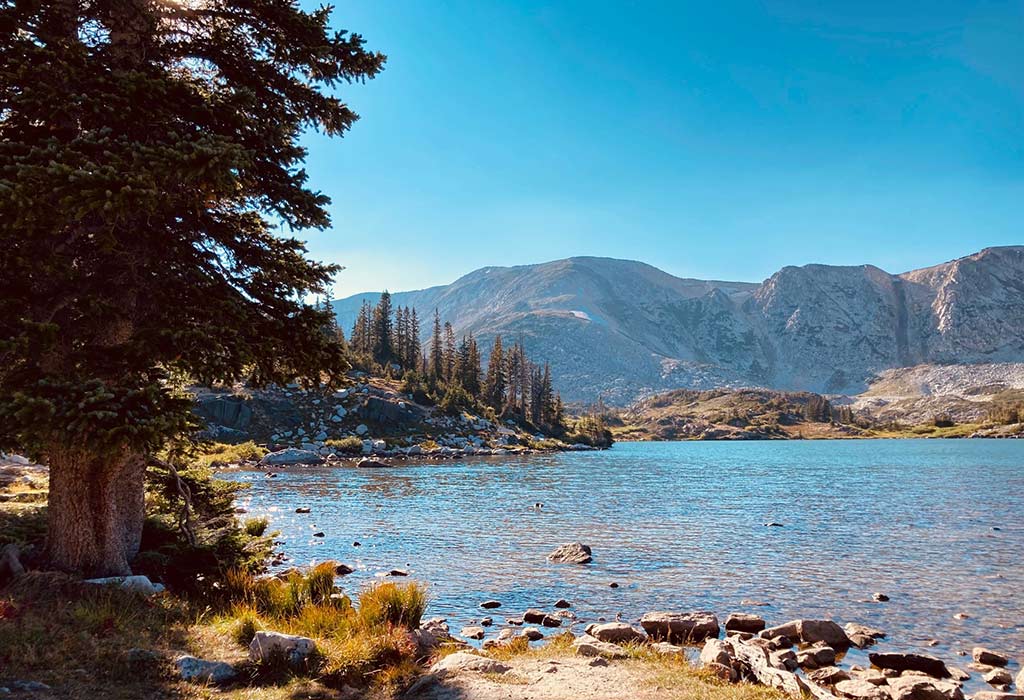The Wyoming Office of State Lands and Investments (OSLI) is proposing a land trade with the U.S. Forest Service to acquire part of Medicine Bow National Forest in southern Wyoming for the creation of a new dam and reservoir. This is a really bad idea for a number of reasons and would only prove to serve as late-season water for fewer than 100 rancher-irrigators to grow more hay.
The West Fork Battle Creek Watershed Plan would trade approximately 1,350 acres of national forest for about 2,025 acres of state land inholdings already within the Medicine Bow. Sadly, this is an excellent example of federal land management agencies’ willingness to advance private benefits at public expense.
We must stand-up for the Medicine Bow and the wildlife that call the forest home. There was only a short time to provide comments to the decision makers via an online portal. The initial comment period closed on Feb. 13, but there will be another opportunity to comment when the Forest Service releases the draft environmental impact statement. Contact the Forest Service’s Jessica Vogt at Jessica.Vogt@usda.gov to receive notification of publication of the draft EIS.
Here are some important points to remember:
- Tell the Forest Service to reject the land trade proposal that would site the new dam and reservoir near a designated wilderness area.
- The law is clear: remind the Forest Service that they cannot agree to a land exchange unless the trade will serve the public interest. The agency should not be considering a land trade in southern Wyoming that would result in a new 264-foot-high dam and reservoir on what is now national forest land.
- The project would be a windfall for a small number of rancher-irrigators but would provide scant benefit to the public and public lands and they should know you are in opposition.
Here’s more background that may be helpful:
OSLI and the two irrigation districts that would take water from the proposed reservoir claim the project is needed to provide a late season supplemental water supply for irrigation and would benefit fisheries, riparian and wetland wildlife habitats, and recreation. The purported “need” for late season water is a want rather than a need, as local rancher-irrigators have operated for generations without the late season water this project would provide.
That said, it’s not difficult to see why the irrigation districts’ members are in favor of this project—the state of Wyoming would cover 92 percent of the estimated $80 million cost of construction. Without the state subsidizing this project, it’s simply not viable, as no agricultural water use is profitable at an annual cost of more than $13,000 per acre-foot ($80,000,000 ÷ 6,000 acre-feet = $13,333/acre-foot).
The United States and its agencies have no duty to approve a pork-barrel project that benefits a private few rather than the larger public.
Despite the proponent’s claims, this project is not likely to provide any significant benefits to the greater public. In terms of recreation benefits, visitors at the new reservoir would mostly come from the local population rather than from outside the project area. Two existing reservoirs already serve local recreationists, and they are not suffering from overcrowding.
Recreational fishing below the dam would remain limited by much of the river having restricted access due to private land ownership. In the event that the reservoir should unexpectedly draw significant numbers of new recreation visitors, the nearby Huston Park Wilderness would suffer from spillover impacts.
Claimed public benefits for fish and wildlife habitat are also suspect. The dam would theoretically improve habitat for native Colorado River cutthroat trout by providing a barrier to the upstream movement of non-native trout, but reservoirs are often illegally stocked or planted with non-native fish, and any non-natives planted in the reservoir would face no impediments to moving upstream into cutthroat habitat.
Regarding wildlife habitat, it’s disingenuous to claim, as the watermaster of one of the two irrigation districts has, that the project would be “pretty much doing the work of beavers to build riparian areas and habitat.” Although the project might increase late season flows to the creek, irrigation-induced wetlands lack the complexity of natural wetlands and do not provide the same types and quality of riparian and wildlife habitats.
In summary, this is a project that would benefit a small number of ranchers and would be almost entirely subsidized by the state of Wyoming. The so-called public benefits of the project don’t hold up to scrutiny. Because this project is not in the public interest, the Forest Service must reject the land exchange that would make it possible.
